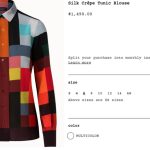 Turkey Exporters Assembly has conveyed that in a letter received from the Ministry of Commerce, General Directorate of Export in reference to the letter of the Amman Commercial Counselor; Jordan Customs Department by being effective from July 23, 2020 Date with an internal circular obtained samples from that entered into force and industry representatives, the clothing products from Turkey will constitute the basis for tariff calculation of a new application on the minimum customs value is reported to be enacted.
Turkey Exporters Assembly has conveyed that in a letter received from the Ministry of Commerce, General Directorate of Export in reference to the letter of the Amman Commercial Counselor; Jordan Customs Department by being effective from July 23, 2020 Date with an internal circular obtained samples from that entered into force and industry representatives, the clothing products from Turkey will constitute the basis for tariff calculation of a new application on the minimum customs value is reported to be enacted.
In the aforementioned article, it is stated that within the scope of the new application, the application of determining the customs value, which was previously applied in a complex system, was simplified and the application of minimum value determined according to the product group and quality class was started. In addition, according to the research and the information obtained from the importers operating in the sector, with the new application, the customs values that will constitute the basis of the customs tax were reduced by 5-30%, so that the customs tax amount to be applied in the import of ready-made clothing from our Turkey will decrease at the same rate and in this respect, from Turkey to Jordan. It is stated that an increase in ready-made clothing exports is expected.
Jordanian manufacturers import all the fabrics they use, sourcing a wide variety of fabrics and trims in different quality ranges from abroad. Fabric production in general typically takes place in very large factories located in low income countries such as Vietnam, Bangladesh and China. Jordan is home to only a few small-scale fabric producers, including a wool mill, producing mostly for their own direct use and not selling fabrics to other mills. Large factories in Jordan focus on mid-high market segments, working with high-quality, trendy fabrics and trims. Most factories buy their high-quality fabrics in Korea, China, Turkey, Taiwan or Indonesia, but a select few source from Europe, including Italy.
Companies in Jordan focus on the garment production node of the value chain. Inputs have to be sourced from abroad — no fabrics are produced in Jordan for lack of domestic cotton production and water shortage.





